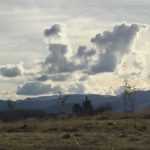 4 acres planted on contour
4 acres planted on contour
628 trees
85 varieties of apples, pears & quince
Semi-dwarfing rootstock, M7 & Provence Quince
Our orchard is a continual work in progress, complete with a huge learning curve and lots of dirt ridden DIY. Our hope is to create not only an orchard as a fruit source for our cider business, but a diverse ecosystem of plants and animals. We have begun some interplanting with nitrogen fixing trees, fig and nut trees as well as small shrubs and drought tolerant perennials that Kim started from cuttings. We’ve added raptor roosts, bird and owl boxes, mason bee nesting sites and an insect hotel as part of our integrated pest management system. We believe in promoting a rich and integrated ecosystem, both above and below ground. We strive to balance the subsurface ecological world through the addition of woodchips, compost and biodynamic preparations.
With a very small budget, like $100, we started with 100 apple trees in 2014. Dan taught himself to graft with a bottle of whiskey and YouTube and found he was quite good at it. We designed the original orchard in straight lines with a 10’x20′ spacing and semi-dwarf trees on M7 rootstock. Our decision to use semi-dwarfing rootstock was for a couple of reasons: we don’t have permanent irrigation available and we wanted them to be drought tolerant to be able to strive under any climate change conditions as our seasons get longer and hotter, We wanted trees that would be big enough that we didn’t need trellising or staking, but small enough we didn’t have to use tall ladders for picking. We have plenty of land, so space wasn’t really a consideration. The trees survived beautifully so we decided to expand.
Then in 2015, like crazy people, we totally changed the planting design to follow the contour of the orchard which has a slight grade. So, we dug up the original 100 trees and replanted them and added about 500 more including some pears and quince. With the bulk of the varieties, about 70, in apples, planting turned out to be quite complicated as the orchard is laid out in succession of ripening times, but we powered through and got it done with help from friends and WWOOFers. As it turns out, 2015 was one of the hottest, most painful, and drought stricken years we’ve ever had in Oregon. Needless to say, there was quite a bit of death and dying.
The focus of 2016 was on replanting and trying to fill in any holes and keep everything else alive. In 2017 and 2018 we are focusing on replants, vole guards and deer fencing. Some of the fun projects, because we need to have some fun, include replanting our overgrown hedgerows with native shrubs and trees, adding windbreaks and hopefully mushrooms! We also have seedlings we are planning to plant out in a standard orchard and a bunch of cuttings from some of my favorite crab apples and pear trees.
